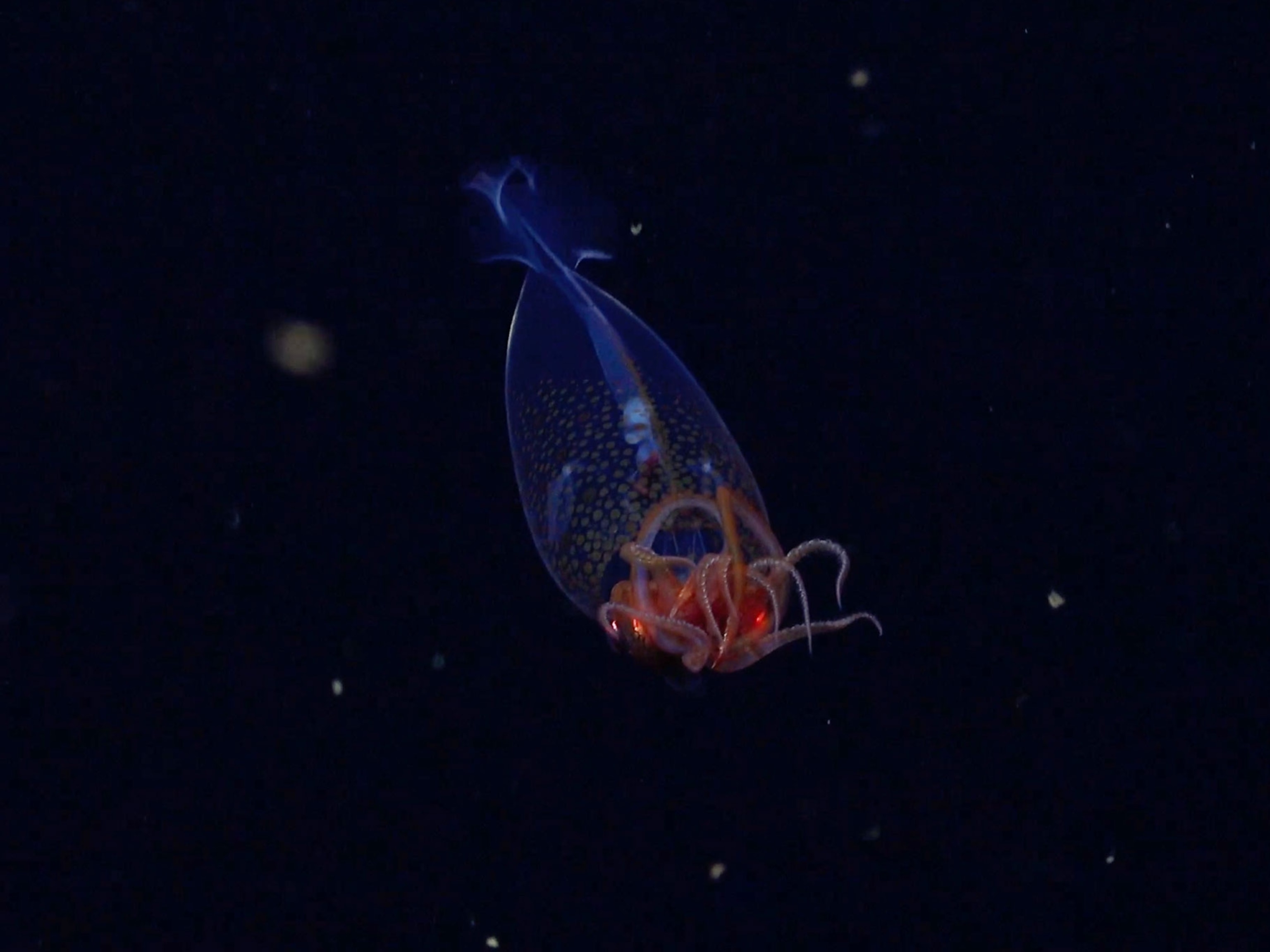Watch: Bizarre Deep-Sea Squid Has Mismatched Eyes
Scientists have finally figured out why the cock-eyed squid has such strange peepers.
Fishermen have wondered about the “cock-eyed” squid's mismatched eyes for more than a hundred years.
Its bulging left eye is big and yellow, whereas the right eye is much smaller and clear.
“They are freaky and weird looking—you want to know what is going on with their eyeballs,” says Duke biologist Katie Thomas, who led a new study on the animal, also called the strawberry squid.
In the 1970s, Richard Young, a squid biologist, had hypothesized that the larger eye detects dim sunlight, which helps the squid spot prey swimming overhead. But the creatures are difficult to study in their habitat, which can be as far as 3,300 feet deep. (See "Giant Squid Could Be Bigger Than a School Bus.")
So Thomas and her colleagues watched 30 years' worth of video footage from remotely operated vehicles taken off the California coast by the Monterey Bay Aquarium Research Institute. Thomas found more than 150 instances in which the cock-eyed squid was captured on video and used that footage to measure the orientation of the squid’s body and eyes.
The team found that the animal swims diagonally; the bigger left eye consistently faces upward and the smaller right eye faces down.
Using computer simulations of visual sensitivity, Thomas and her colleagues found that larger eyes significantly improve visual capability when detecting animals illuminated by the dim sunlight coming from above.
Squid's-Eye View
"A large eye can be more sensitive—it's like having a large aperture in your camera," says Thomas, whose study was published February 13 in Philosophical Transactions B.
Because sunlight is unidirectional, it does not hit an eye facing horizontally or downward. Thus, "for a downward-facing eye, there is so little light reaching the eye anyway that tripling the size of the eye does not improve the visual capability much," says Thomas.
"Eyes are really expensive to make and maintain, so you can understand why the resources wouldn't be invested in the smaller eye." (Read "These Beautiful Creatures Spend Their Entire Lives in Darkness.")
Instead, the downward-facing eye helps the squid detect bioluminescent creatures below—including predators lurking in the dark.
"These squids are really weird, and people have speculated as to how they used their eyes," says Michael Vecchione, an invertebrate zoologist at the Smithsonian's Natural Museum of Natural History who was not involved in the research.
"Katie Thomas and colleagues are the first to really work out the details of how they operate down in the deep sea."
One Eye for Each
The bigger eye also has another benefit: Its yellow lens can spot prey swimming above.
Many bioluminescent fish glow from their bellies, blending themselves into the downwelling sunlight. But by filtering out the shortest wavelengths, the squid’s yellow lens enhances the contrast between the bioluminescent camouflage and downwelling sunlight so it can more easily detect prey that might be swimming above, says Thomas. (See "Giant Squid's Basketball-Size Eyes Have Sperm Whale Vision.")
"The deep sea is an amazing natural laboratory for eye design, because the kinds of eyes you need to see bioluminescence are different from the kinds of eyes you need to see the basic ambient light,” says senior author Sönke Johnsen, a biologist at Duke.
"In the case of … this cock-eyed squid, they chose one eye for each.”





